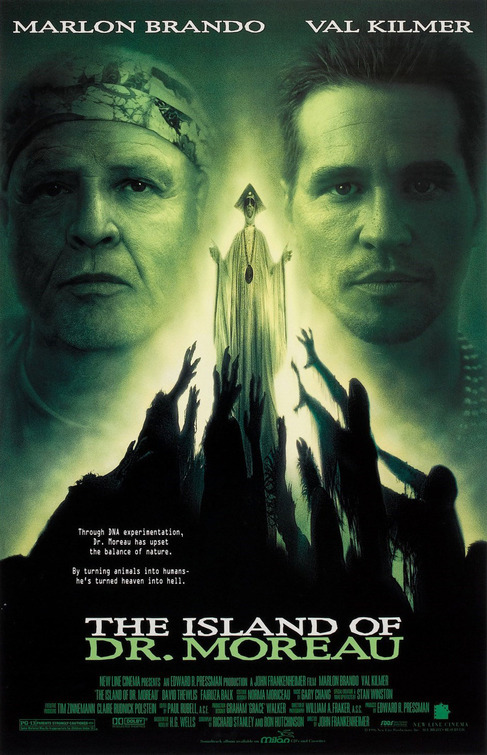 *** This review may contain mutant spoilers ***
*** This review may contain mutant spoilers ***
A misunderstood DNA tinkering scientist performs human-animal vivisections, but things go wrong when his creations begin to regress.
The Island of Dr. Moreau is the third major film adaptation of H. G. Wells and plagued with production issues (later extensively covered in Lost Souls: The Doomed Journey of Richard Stanley's Island of Dr Moreau) and unfairly (debatably) panned by critics. Director John Frankenheimer offers plenty of visual treats and along with the writers injects enough double crosses, surprise deaths and story twists to hold interest. The themes of nature, law, religion and society simmer behind the strained wacky nature of the characters.
Edward Douglas (David Thewlis) survives a plane crash in the Java Sea and is eventually rescued by a passing boat which arrives on an Island, soon he finds that the inhabitants are human-animal hybrids. Writers Richard Stanley (the intended original director) and Ron Hutchinson offer a disciplined enough script. Referred to as "The Father" by the mutants, Marlon Brando gives an outlandish performance as the mad scientist. Val Kilmer, particularly makes the most of it as Montgomery - at one point mimicking Brando's Dr. Moreau with his best impression.
Thewlis looks confused throughout, either due to the production or because of the character, either way his performance is fitting as perplexed Douglas, a U.N. agent who is in the middle of the warring mutant animals who are being controlled through fear using implants to exert pain. There's some entertaining moments between Brando and the world's smallest man, Nelson de la Rosa. Rosa's silent role as Majai, a miniature version of Moreau would inspire Austin Powers' Mini-me.
Notable is Fairuza Balk as Aissa, Douglas' love interest. Sadly, Ron Perlman's extended cameo of sorts is wasted as the Sayer of the Law, a blind goat-like hybrid. The makeup and costumes are very good, but the CGI elements are '96 primitive and unnecessary as the cat-like creatures unconvincingly bound about. The action scenes, quieter tension filled moments are well executed and are at times menacing. The island's buildings, lush greens and sea blues of the on location shoot coupled with Gary Chang's music creates plenty of atmosphere, especially during the night-time scenes where the hybrid faction revolt, rampaging through the compounds huts shooting guns and blowing things up.
Even though Richard Stanley never got to realise his darker version his DNA (no pun intended) is all over this. And while this film may have been made for the masses and less art house the late Frankenheimer's 1996 offering is arguably the most entertaining version of Wells' classic to date.

No comments:
Post a Comment